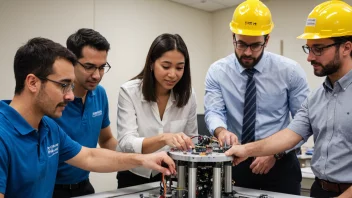As the demand for skilled engineers continues to rise, the methods of delivering engineering education are evolving. Traditional classroom-based education and online learning platforms both offer unique advantages and challenges. This article aims to compare these two approaches, exploring their pros, cons, and key differences to help prospective students make an informed decision.
Accessibility and Flexibility
One of the most significant advantages of online engineering education is its accessibility. Students can access course materials from anywhere in the world, provided they have an internet connection. This flexibility allows learners to balance their studies with work or personal commitments, making it an attractive option for many.
In contrast, traditional engineering education typically requires students to attend classes on campus, which can be a barrier for those living far from educational institutions or with rigid work schedules. However, on-campus programs often provide a structured environment that some students may find beneficial for their learning.
Interaction and Collaboration
Traditional engineering education fosters face-to-face interaction between students and instructors, promoting collaboration and networking opportunities. This environment can lead to deeper discussions, immediate feedback, and a sense of community among peers.
On the other hand, online education often relies on discussion forums and virtual meetings, which can sometimes lack the immediacy and personal touch of in-person interactions. While many online programs incorporate group projects and live sessions, the experience may not fully replicate the dynamic of a physical classroom.
Curriculum and Resources
In traditional settings, students benefit from access to on-campus resources like laboratories, libraries, and workshops. These facilities provide hands-on experience, which is crucial in engineering disciplines. Students can engage with equipment, conduct experiments, and gain practical skills that are hard to replicate in an online environment.
Conversely, online engineering programs often utilize virtual simulations and digital resources to replace physical labs. While these tools can be effective, some students may feel they miss out on essential hands-on experiences. However, many online programs are increasingly incorporating hybrid models that allow for some in-person lab work.
Cost Considerations
Cost is a significant factor for many prospective students. Online engineering programs generally have lower tuition fees compared to traditional institutions, and students can save on commuting and housing costs. This affordability can make engineering education more accessible to a broader audience.
Traditional programs, while often more expensive, may offer more comprehensive financial aid options and scholarships. Additionally, the prestige associated with established universities can sometimes lead to better job prospects after graduation, which is an important consideration for many students.
Learning Styles and Outcomes
Every student has a unique learning style. Some thrive in the structured environment of traditional education, benefiting from direct interaction with instructors and peers. Others may prefer the self-paced nature of online learning, which allows them to revisit materials and learn at their own speed.
Research indicates that both methods can lead to successful outcomes when aligned with the student's learning preferences. Traditional programs may produce graduates who are better prepared for collaborative work environments, while online programs may foster self-motivation and independence, essential traits for modern engineers.
Industry Recognition
When it comes to industry recognition, traditional engineering degrees from established universities often carry significant weight. Employers may have a preference for graduates from renowned institutions, which can impact hiring decisions.
However, as online education becomes more mainstream, many employers are beginning to recognize the value of online degrees, especially from accredited programs. The key is ensuring that the online program is reputable and offers a robust curriculum that meets industry standards.
Conclusion
In conclusion, both traditional and online engineering education have their distinct advantages and disadvantages. Traditional education offers structured learning, hands-on experience, and strong networking opportunities, while online education provides flexibility, accessibility, and often lower costs. Prospective students should consider their personal circumstances, learning styles, and career goals when choosing between these two educational paths. Ultimately, the best choice will depend on individual preferences and needs, but both avenues can lead to successful careers in engineering.






